Where: This view looks east from the hill above the cemeteries in Happy Valley. The wooded slopes on the left are Morrison Hill, when it was still a hill! Across to their right is an open area used for sports grounds, then right again we can see the edge of the race-track.
Across the middle of the photo run more wooded hillsides - Leighton Hill on the right, and on the left the hill where Jardine Matheson had several grand buildings. Then above that is the old typhoon shelter, today the site of Victoria Park.
What: Trees and Chimneys! Not a department store in site, as at this time Causeway Bay was an industrial area. I've marked up the big chimneys, all fourteen of them, in the hope we can identify what they were for:
Here are the first two:
Chimney A is just visible above the treetops of Morrison Hill. Any ideas what it belonged to?
Across the Bowrington Canal (today's Canal Road) chimney B is one of the biggest in this photo. I believe that it, together with the building attached to it, were the power station that provided the electricity to run the trams. Hong Kong Tramways continued generating their own electricity until 1923, when they started buying it from the Hongkong Electric Co. instead [1].
Across to the right are two more:
I've got no idea what they belonged to, all suggestions welcome!
They overlook an open piece of land that was used by different groups for sports. Just below the 'D' is a club's pavilion, while at the bottom right corner of this photo you can see the ground has been marked out as a tennis court.
The next group are out on Jardine Matheson's land:
Their sugar refinery [2] was in this area and I guess that some, if not all of these chimneys belonged to it. You also get a glimpse of one of their residential buildings [3] on the hillside, just next to the letter 'H'.
Here are several more chimneys, between the hill and the typhoon shelter:
There's another Jardine Matheson house on top of the hill, just next to the 'K'. Further downhill there's a terrace of private houses. They run from right to left along Wong Nai Chung Road, then swing around the corner into Leighton Hill Road. At the end of the terrace there's a taller three-storey building, and beyond that stood a Police Station.
The next chimney is across to the right again, and is another contender for the biggest:
There were cotton mills [4] on that piece of land, which explains the chimney (and the "Cotton Path" that still runs across there today). Later St Paul's school and hospital would be built on the site.
The last two are further away, on the far side of the typhoon shelter. Here's the first:
I don't know what the chimney belonged to, but the pier to the left is marked "Asiatic Petroleum & Co. Pier" on a map from the 1930s. Were they connected?
Then the last one looks brand new, as it doesn't have the sooty top that we see on the other chimneys:
And it's yet another I know nothing about. If you have any suggestions, please let us know in the comments below.
Who: / When: Fortunately the seller included this information about the original owner of the postcard:
THIS OLD BLACK AND WHITE POSTCARD WAS ACQUIRED AROUND 1917 BY A SOLDIER WHO WAS POSTED THERE IN WW1. [It belonged to] PERCY DOUGLAS GEALL OF THE 25TH BATT. MIDDLESEX REGIMENT, HONG KONG. HE WAS POSTED THERE BETWEEN 1917-1919.
So it can't be later than 1919. Given that postcards were printed and then sold for several years, the photo was probably taken earlier, so I'll go with 1917. If you can see anything that pins down the date more accurately, please let us know.
Regards, David
Trivia: Even the back of the card is a mystery, as I don't remember seeing this stamp box before.
Does anyone recognise the publisher?
The last point to note is that those Middlesex men were great collectors of photos and postcards. This is the third photo / postcard I've shown that can be traced back to the 25th Battalion of the Middlesex Regiment. I've bought them at different times, and via different sources, so they're probably from different original owners.
Here's a group of soldiers from the 25th, ready to entertain:
And here's a Middlesex man on lookout at Cape D'Aguilar:
References:
- Hong Kong Tramways milestones
- China Sugar Refinery
- Jardine Matheson - East Point
- Cotton Mills of the Hongkong Cotton-Spinning, Weaving, and Dyeing Company, Ltd.
Reference: A209
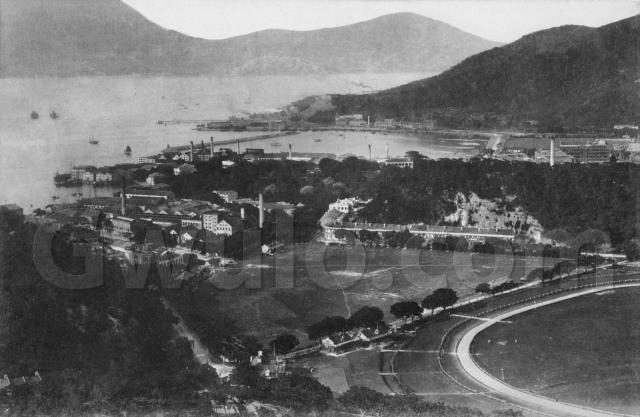
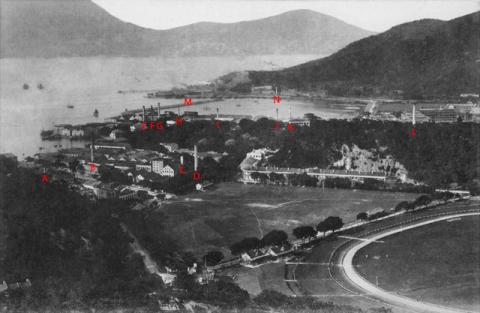
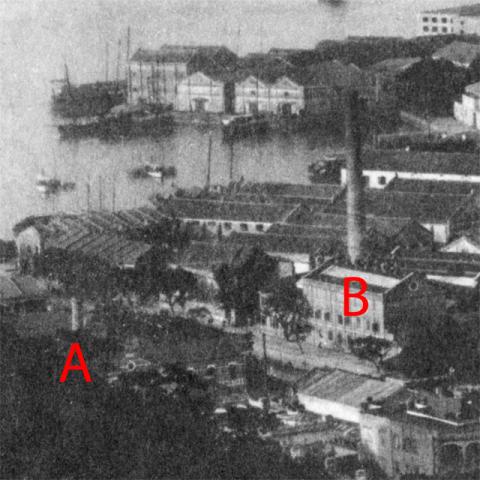
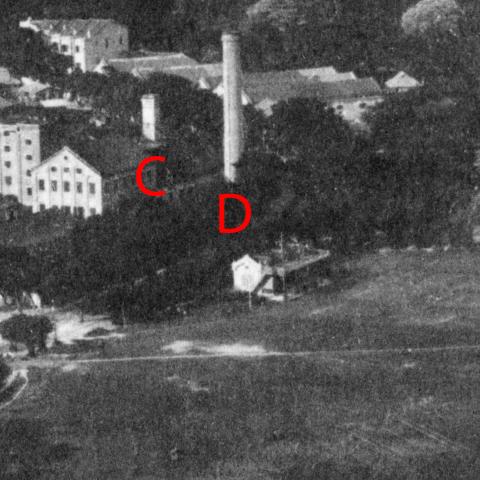
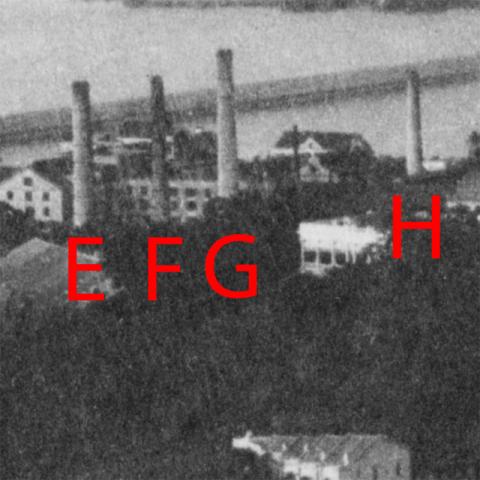

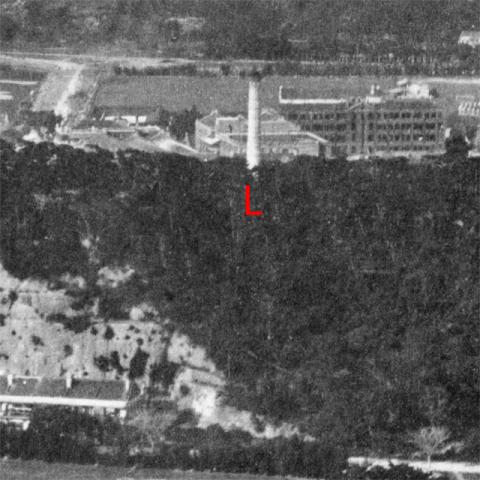
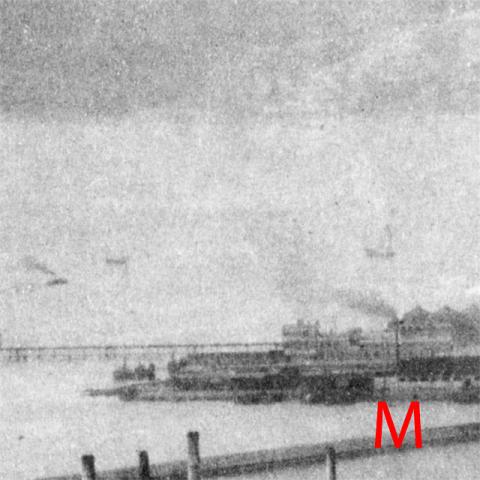
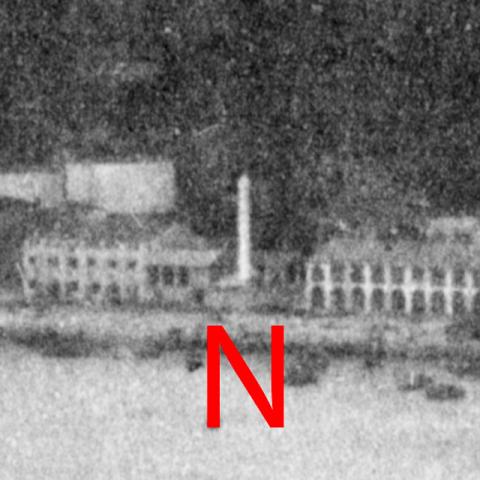
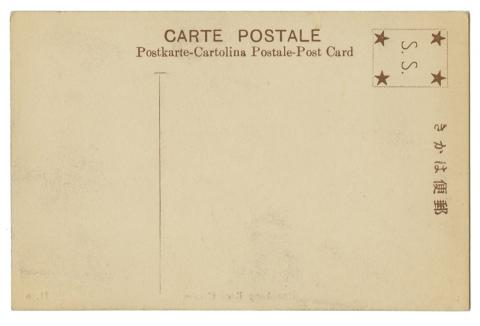



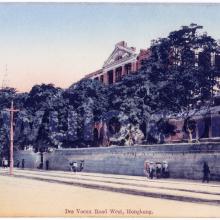
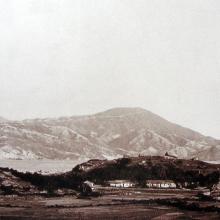

Comments
Re Photo
The photo was turned into a 'coloured' postcard. The back of the postcard reveals the lettering/characters is of Japanese origin and perhaps came from a steam ship that sailed into Hong Kong.
Thanks for the extra versions
Thanks for the extra versions of this. I like it when we get two different hand-tinted versions of the same photo - it shows that the colours were chosen pretty much at random!
The front of my card also has the legend "Race Course, Hongkong. H9", so was probably from the same publisher. I wondered if the Japanese characters might have been the name of a store in Hong Kong, eg Daibutsu?
Regards, David
Re: Japanese Characters
I think the Japanese characters just say post card. Daibatsu selling postcards may be a possibility.
A slightly later picture
This picture is a few years later. My grandmother was in HK from 1915 to 1932 and so would be some time in that period. Note the extra stadium around where HKFC probably is not, and all the new buildings behind the pavillion. Interesting contrast!
Another one
Found this one on Flickr, attributed to the 1930's. Very similar to the 1920's one, but not identical.
Similar view
Found on Flickr a similar view attributed to 1904.
It also shows the two chimneys C and D. This factory was built on IL 730 and IL 733, but still unknown.
Chimney "J"
My vote on "J" goes to Ice Works (Hongkong Ice Company, Ltd.) [c.1874-????].